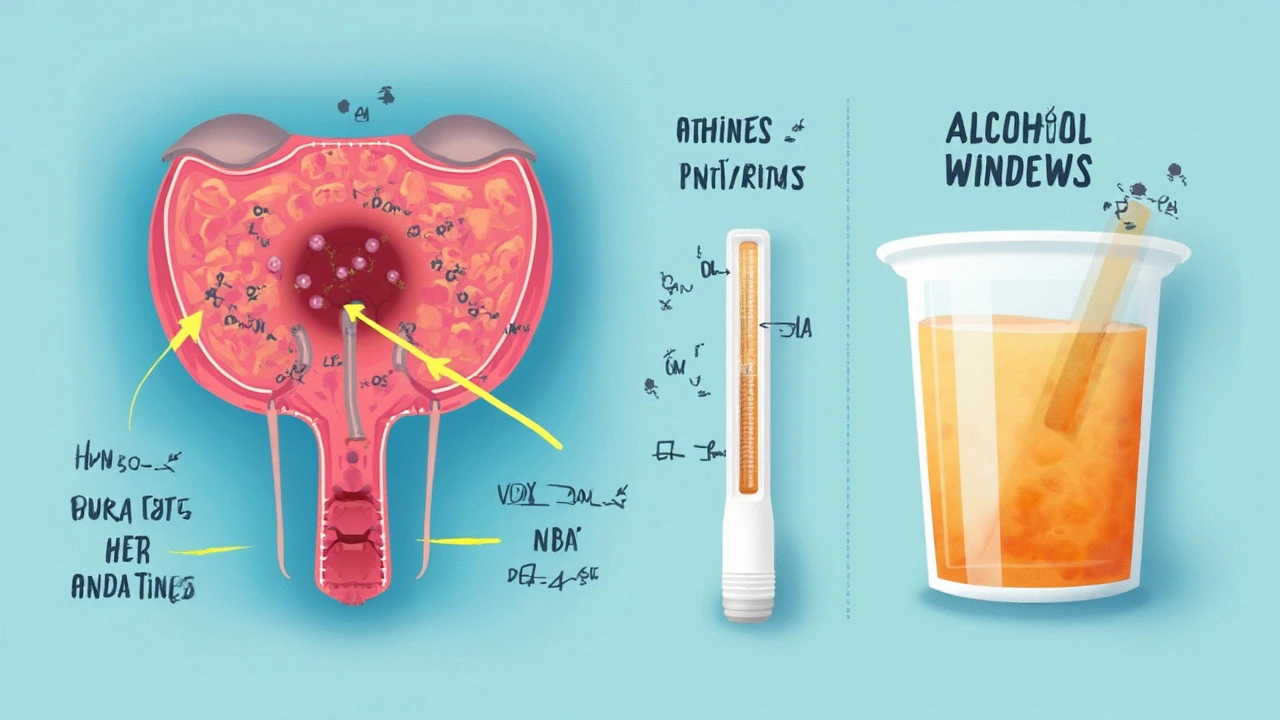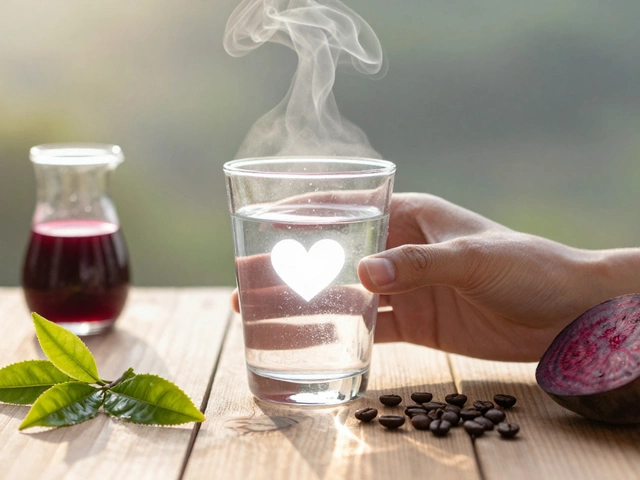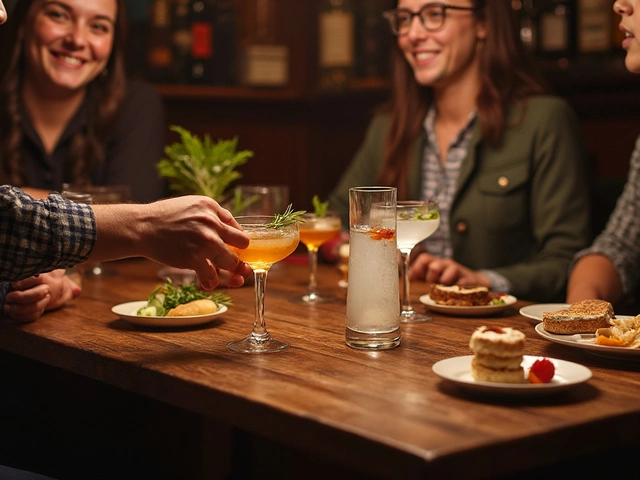Picture this: you’re at a party, everyone’s toasting, and you take the tiniest sip of champagne—not even enough to call it a drink. Suddenly, you remember you might have a urine test coming up. Panic mode. Could that little drop actually show up on a test? You’re not the first person to worry about this.
It sounds wild, but the truth is, alcohol is tracked by your body pretty efficiently. Even a small amount can make its way into your urine after you drink it. But just how much does it take to set off those testing strips? Does a single sip count, or would it just pass right through, barely leaving a trace? There’s a lot of confusing info floating around. Let’s break down what really happens after even a tiny taste and what you need to know if you want to stay safe—for work, for legal reasons, or just for peace of mind.
- How Alcohol Gets Detected in Urine
- Does a Sip Make a Difference?
- Detection Windows and Test Sensitivity
- Why Non-Alcoholic Drinks Can Be Tricky
- Tips for Staying Clear on a Test
How Alcohol Gets Detected in Urine
It might seem strange, but your body starts breaking down alcohol the minute you swallow it. Once alcohol enters your stomach, it gets absorbed right into your bloodstream. From there, your liver takes a swing at breaking most of it down. But—here’s the important part—not all of it gets processed right away, and what’s left seeps out through your urine, sweat, and even your breath. When it comes to alcohol urine test methods, labs are looking for two things: ethanol (actual booze) and something called EtG, or ethyl glucuronide. EtG is a marker your body leaves behind after it’s processed alcohol.
Why test for EtG? Because it sticks around way longer than regular alcohol, so testers can spot even small amounts hours—even days—after you drink. There’s no hiding from a sensitive alcohol detection test. Here’s how most urine tests do the job:
- They collect a urine sample, usually midstream so it’s clean.
- The lab checks for ethanol, but mostly for EtG, since ethanol disappears fast—sometimes within 12 hours.
- If EtG is there, it means your body saw alcohol recently. Some tests flag EtG at crazy low levels, even 100 nanograms per milliliter.
To give you an idea, here’s what happens after alcohol is in your system:
| Step | What’s Happening |
|---|---|
| Zero to 2 hours | Alcohol shows up in blood, then your body starts sending it to urine |
| Up to 12 hours | Most ethanol is gone from blood and urine |
| 12 to 80 hours | EtG can still be found in your urine |
The short answer? Your body is like a big filter. Even the smallest amount of booze gets tracked, and urine tests—especially modern ones—are fine-tuned to catch even those drops if they really want to.
Does a Sip Make a Difference?
This is the big question: does just one tiny sip of alcohol make your alcohol urine test positive? Here’s what’s really happening. When you drink alcohol—even a little—your body starts breaking it down within minutes. Some of it gets processed by your liver, but another chunk goes straight into your bloodstream and eventually winds up in your urine.
Now, for a full-sized drink, you can expect alcohol to show up in your urine for 12 to 48 hours, sometimes even longer if the tester is looking for a byproduct called EtG (ethyl glucuronide). But what about just a sip? For most people, a single mouthful—think half a shot or less—usually isn’t enough to keep your blood alcohol concentration (BAC) above zero for very long. Most standard tests are designed to catch real drinking, not trace amounts.
If you’re just talking about a genuine sip, there’s a chance the alcohol will get diluted or processed by the time you pee. Tests that look for EtG, though, are super sensitive. Lab data has shown some EtG urine tests can detect quantities as tiny as 500 ng/mL, which means small exposures sometimes give a weak positive. Still, for most workplace tests or general alcohol screenings, a single sip is unlikely to trip the alarm. Things can be different if you’ve had more than a mouthful or if you have a slow metabolism.
- Alcohol metabolism varies: Factors like your body size, age, and even what you’ve eaten can change how your body deals with alcohol.
- Type of test matters: A regular urine test (for BAC) won’t pick up a microdose, but ultra-sensitive EtG tests might—especially in the few hours after the sip.
- Time is on your side: If the test is more than 6-8 hours after a single sip, your body has probably handled it already.
Check out some rough numbers:
| Alcohol Consumed | Normal Urine Test Detection | EtG Test Detection |
|---|---|---|
| Full drink | 12-24 hours | 1-3 days |
| Single sip | Usually none | Up to 12 hours (depends on metabolism and test sensitivity) |
So, if you just nibbled at a glass and you’re facing a standard alcohol urine test, odds are you’re in the clear. But with an ultra-sensitive EtG test soon after, there’s a small possibility it’ll pop up. When in doubt, avoid the sip—especially if your job or health depends on it.

Detection Windows and Test Sensitivity
This is where things get interesting. People think a alcohol urine test can only catch you if you’ve been drinking a lot, but that’s not exactly true. These tests are surprisingly sensitive—even one drink, or sometimes a small sip, could show up. It depends on what kind of test they’re running and how much you actually drank.
Standard urine tests usually look for ethanol, which is the kind of alcohol in drinks. Ethanol leaves your system pretty fast—usually within 12 to 24 hours, depending how much you had, your body size, how fast your metabolism runs, and all that. But urine tests these days often go beyond just ethanol. Some tests now hunt for a marker called EtG (ethyl glucuronide), which is basically a chemical your body makes when processing booze. EtG sticks around way longer than the alcohol itself—sometimes up to 80 hours after that last drink, even if it was just one bottle of beer.
Wondering how these detection times compare for different tests? Here's a quick breakdown:
| Test Type | Usual Detection Window |
|---|---|
| Standard Ethanol Test | Up to 24 hours |
| EtG Urine Test | Up to 80 hours (sometimes longer) |
Even with that sensitivity, one tiny sip might not always set off the test, especially the ethanol kind. But with EtG tests, which are much better at picking up any sign that your body touched alcohol, even small amounts can sometimes register. If you drank less than a full serving, you’re probably at the low end of the risk, but there’s no real guarantee. It’s just not worth betting on.
Other stuff affects these numbers. Some people process alcohol faster. If you drank water or sweat a lot after that sip, it could move the alcohol out of your system faster. But at the end of the day, alcohol detection tests can be unpredictable, and test sensitivity keeps improving every year. When in doubt, it’s smarter to skip the sip if you know you have a test coming up.
Why Non-Alcoholic Drinks Can Be Tricky
People often grab a non-alcoholic beer or cocktail thinking they’re staying totally in the clear. But here’s the catch: non-alcoholic doesn’t mean alcohol-free. Most non-alcoholic drinks actually have a small trace of booze. In the U.S., for a drink to be labeled non-alcoholic, it just needs to have less than 0.5% alcohol by volume, which is about the same as some ripe fruit or a glass of kombucha.
Now, for most people, sipping a non-alcoholic beer or two won’t do anything measurable on a alcohol urine test. But if you have several, or if you’re a smaller person and your system is sensitive, you could end up with a tiny blip of alcohol byproducts. It’s rare, but possible.
"Even small amounts of alcohol from non-alcoholic drinks can sometimes be detected by advanced urine tests designed to pick up even trace levels of alcohol metabolites," says Dr. Ethan Weiss, a cardiologist at UCSF.
This can especially matter if you’re being tested using EtG tests—which can detect alcohol use up to 80 hours after drinking. EtG (ethyl glucuronide) is a marker left in your urine after your body breaks down alcohol, even if it’s just a little bit. Standard breathalyzers probably won’t pick up anything after a non-alcoholic drink, but a sensitive urine test might just catch it.
Check out these drinks and how much booze they actually contain:
| Drink | Approx. Alcohol Content |
|---|---|
| Non-alcoholic beer | 0.3% - 0.5% |
| Kombucha | 0.2% - 2.5% |
| De-alcoholized wine | Up to 0.5% |
| Traditional soft drinks | 0% |
If you want to make sure you’re not risking a mark on your alcohol urine test, check the label on your drink. When in doubt, stick to regular sodas, juices, or sparkling waters—those are always safe bets. And if you’re ever in a high-stakes situation, like probation or a job screening, it’s smart to avoid non-alcoholic drinks altogether—just to play it safe.

Tips for Staying Clear on a Test
If you’re worried about a alcohol urine test, there are some simple ways to lower your risk of getting a surprise positive result. First off, even a little bit can show up, depending on when the test happens and how sensitive the test is. Those instant tests used in workplaces and clinics today can spot tiny amounts of alcohol, not just from pounding back drinks but also from a quick sip or non-alcoholic beer with trace amounts.
Here are some straightforward moves:
- Skip all drinks with even minimal alcohol: That means steering clear of cocktails, shots, and yes, even most non-alcoholic beers or kombuchas—some can have as much as 0.5% alcohol. Labels are your friend, so always check them.
- Know the test timing: Alcohol generally leaves your body in about 12 to 24 hours for one or two drinks, but tests can sometimes spot breakdown products like EtG (Ethyl Glucuronide) for up to 80 hours after drinking. So if you’ve got a test coming, plan your drinks well in advance—or just go without.
- Hydrate, but don’t overdo it: Drinking water helps flush out your system, but don’t bank on it as a magic fix. Some myths suggest chugging gallons will make alcohol disappear, but labs are wise to that trick and can reject diluted samples.
- Doublecheck meds and mouthwashes: Some medications and even alcohol-based mouthwashes can give off alcohol markers in urine. If you’re unsure, switch to alcohol-free alternatives before a test or talk to a pharmacist.
- Read the room: If avoiding alcohol for a test, skip “just a sip” at social events. It’s not worth the risk if you have a zero-tolerance condition like probation, medical checks, or certain jobs.
Look at this quick table for how long different types of tests usually catch alcohol (after one standard drink):
| Test Type | Typical Detection Window |
|---|---|
| Standard Urine Test | 12-24 hours |
| EtG Urine Test | Up to 80 hours |
| Breath Test | 4-12 hours |
| Blood Test | 12-24 hours |
The safest move: just stick with verified non-alcoholic sodas, juices, or sparkling water until your test is in the rearview mirror. If you ever get a false positive, ask for a confirmation test and let them know about anything you ingested—sometimes, details like a certain medicine or even a bakery treat with rum flavoring can clear things up.


